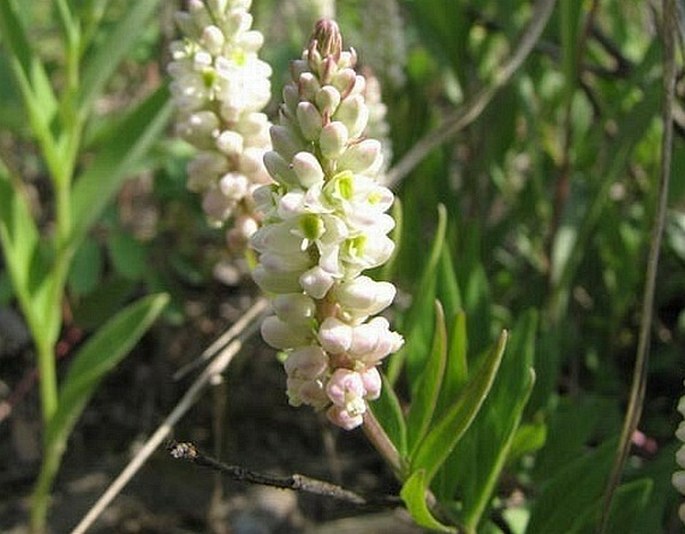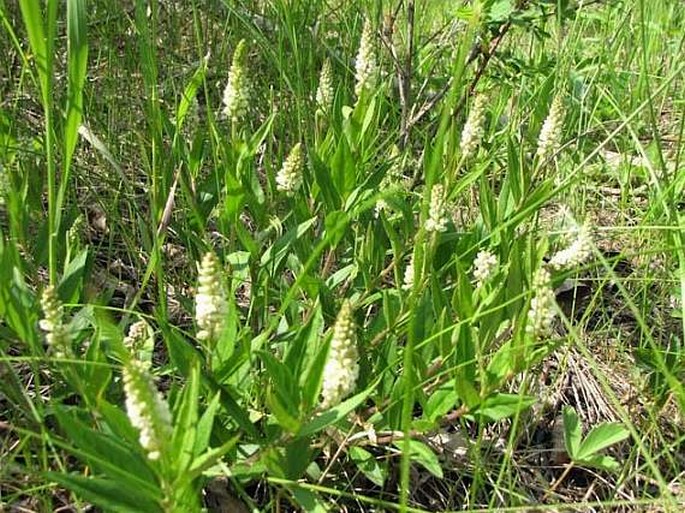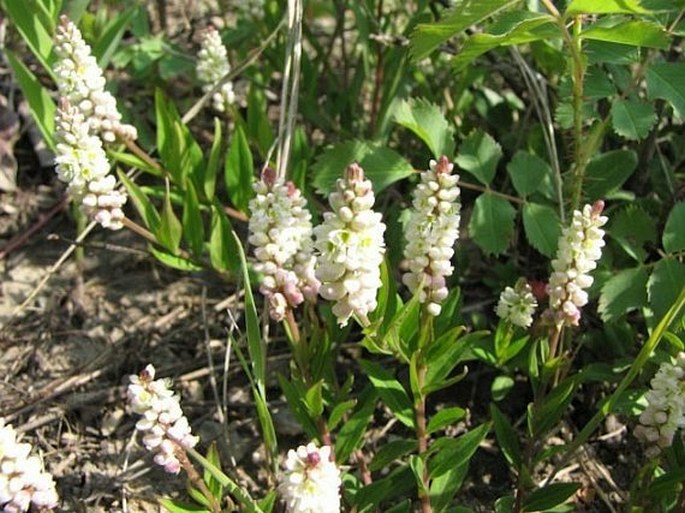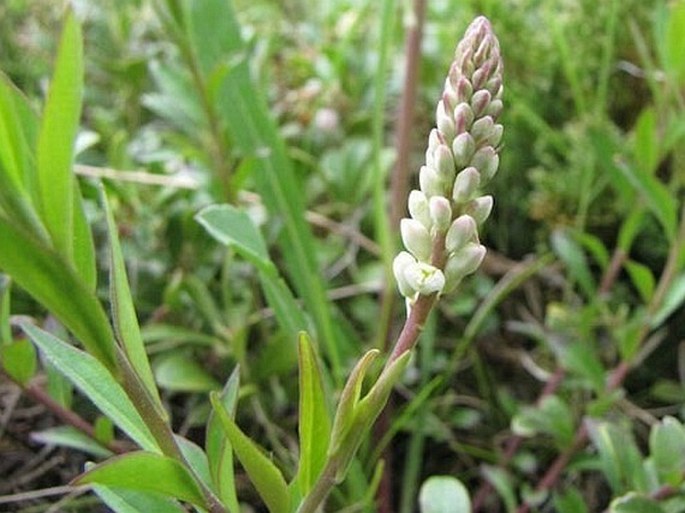Family: Polygalaceae R. Br.

Distribution: North American species, native to eastern side of US, from Atlantic to Dakotas, eastern Wyoming and eastern Oklahoma to South Carolina. In southern Canada it reaches Alberta and Rocky Mountains, rarely to British Columbia.
Ecology: Found in prairie, forests and forest margins, along streams and secondarily along highways, roads and trails, up to 2100 m.

Description: Perennial herb with woody stem, densely branched from base, 20–50(–70) cm tall. Stems prostrate to erect, leaves alternate, sessile to short petiolate, lanceolate, 1–3 cm long, smooth edged. Inflorescence is a terminal spike-like raceme; flowers tiny, corollas 4–5 mm long, white to pinkish. Fruit is a round capsule, 2.5–3.5 mm long.
Use: Native tribes used the root of this plant as antidote against rattlesnake bite, hence the common name. Also the used it as expectorant, diuretic and for inflammation and colds. The expectorant qualities are still used today, as the plant root is collected as medicinal plant for pharmaceutical companies for production of cough syrups.
Threat and protection: It is considered endangered in states of Connecticut, Maine, Maryland and New Jersey.


These images were taken in Canada, Alberta, Calgary, Griffith Woods Park (June 2011).


